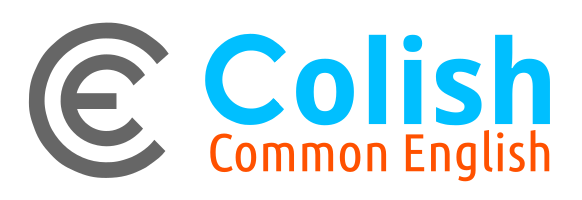By Service | 25 June, 2020

On this page is a collection of interesting questions waiting to be analysed and be answered.
If you have an answer or want to have a go at answering them, please do and send us your detailed answer and the method/facts/calculation on how you got to that result. Please send it per email to service@colish.org. Thanks!
1. Social
1.1 Change
Society goes through change. Generations revolt against their parents and the way they live. We had the sixties with Beatniks, love, flower power.
Is there a natural cycle length i.e. every 10 years?
Background to the question: If spelling changes are to be released over the next generations, is there a natural cycle which can be used?
2. World facts
2.1 Organisations
2.1.1 Exporters
How many companies in the world export to English speaking countries?
How many of those exporting companies deliver documentation in English, where documentation is some kind of separate booklet, book, manual?
2.1.2 International
How many international organisations have English as their first language?
How many workers of these organisations use written English?
2.2 Children
What is the definition of a child? Is it 16, as many work when they are that old?
- Answer: 18 years old
- Source: United Nations Convention on the Rights of the Child. Ratified by 192 of 194 member countries. https://www.ohchr.org/en/professionalinterest/pages/crc.aspx
How many children (including teens) are there in the world today?
- Answer: 2.3 billion
- Source: Unicef, Oct 2019, Demographics,https://data.unicef.org/wp-content/uploads/2019/10/Table-1-Demographics-EN-1.xlsx
How many children (including teens) in the world are learning English today?
How many children not in the major first language countries (AU, CA, GB, IE, US, NZ, ZA?) are learning English today?
2.3 Adults
How many adults will be learning English today?
2.4 Population
Population of countries with English as native language?
- Answer: 470 million
2.5 Working population
How many percent of the population are working?
- Answer: It depends on the country. Some have a large number of migrants, and child rich families. Others have an ageing population.
- Taking the UK: In 2011 65 %. in 2020 approx 63%.
Sources:
- https://www.ethnicity-facts-figures.service.gov.uk/uk-population-by-ethnicity/demographics/working-age-population/latest
- “2011 Census, the total population of England and Wales was 56.1 million, and nearly two-thirds of people (36.3 million) were of ‘working age’ (aged 16 to 64 years)”
- https://www.statista.com/statistics/478769/working-age-population-projection-united-kingdom-uk/
- 42.1 mio in 2020, with 67 mio population = 63 %
3. Styleguides
A styleguide is a booklet explaining how to write texts. It defines things such as case of titles, numbering, punktuation, how to write names.
For example a scientific paper might have a different style than that of a slideshow presentation.
How many different types of styleguides do we need, and what are they?
4. Learning and acceptance
4.1 Spelling acceptance
A spelling regime is a set of spelling rules.
When a person reads a text i.e. a newspaper, is there some kind of measurment system to be able to classify when changes in spelling in that text becomes ugly/uncomfortable to the reader who is unfamilar to a new system?
How do you classify a spelling regime? Is it the number of spelling changes? Number of visual character changes?
4.2 Learning
How long does it take a person to adapt to a new spelling regime if they pick it up from reading / print?
How long does it take a person to adopt a new spelling regime where English is first language?
How long does it take a person to adopt a new spelling regime where English is the second language?
How long does it take a child to learn to spell?
How long does it take a child to ensure a satisfactory functional literacy?
- Answer: 6 years
- The Teaching of reading and writing: An international survey. Page 26. https://unesdoc.unesco.org/ark:/48223/pf0000002929
4.3 Rollout
How many spelling regimes (or rule changes) can co-exist side-by-side in society so that young and old can read the same text comfortably?
What would be the theoretical timespan for the introduction of a new social acceptable spelling regime?
Can Colish learn from other language systems such as the experience Germany had? Is their somekind of empirical evidence or rule set available?
5. Learning materials
Learning materials age with time. New facets of experience, new words or communication styles require that publications are replaced on the market.
From a publishers product management viewpoint, what is the average age of a publication used for language learning in schools?
From a publishers product management viewpoint, what is the average age of a publication used for language learning generally?
6. IT system integration
6.1 Interface / API
The Colish word list needs to be exported to operating systems, applications.
Is there a spec for a standard API or inteface?
6.2 Dictionary Hub
Has somebody already built a hub which can be used / copied?
7. Illiteracy
How many adults in the English mother tongue countries are illiterate?
Answer
Assuming 470 million in the countries, and taking the OECD skills measurments as the framework:
- Below level 1 = 470 x 3.2 % = 15 million
- Level 1 = 470 x 12.3 % = 57 million
- Sum = 72 million
With an estimated ( 470 m x 63 %) 296 m of working age, thats (296/72) one in four adults who have difficulties with simple texts, vending machines such as ATMs, cash dispensers, petrol stations, smartphones, messaging, emails, social networking, jobs.





